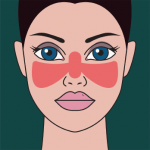For example, studies show that care navigation interventions could be a good place to start. These include things like weekly phone calls with patient navigators, nurses or social workers to provide health education, care coordination and support. One care navigation intervention study showed a significant increase in perceived lupus self-efficacy and a slight trend toward decreased lupus disease activity.3
Interestingly, even a general integrated care management program not specific to SLE demonstrated benefit, with a 50% reduction in the rate of avoidable emergency department (ED) visits and 63% reduction in the rate of avoidable hospitalizations.4 Dr. Feldman noted, “We know that some patients need to be hospitalized and some need to go the ED, so it’s the factors that may be avoidable that we should really be thinking about targeting when we think about navigation interventions.”
Interventions to screen for and meet social needs can also make a difference. Dr. Feldman’s team is currently studying the impact of a screening process in her clinic that adds less than three minutes to the check-in process. When patients with needs are identified, they receive a resource sheet as well as a connection to a community resource specialist who connects the patients with community, hospital, city and state-based resources.
Peer support interventions have also shown benefit, with one study showing cost-effective trends toward improvement in patient activation and engagement in their disease.5
Personalized decision aids are another exciting possibility. One study showed a trend toward more informed choices regarding immunosuppressives when patients were given a tablet-based individualized tool to aid with immunosuppressive medication decision making for LN.6
Last but not least, community-engaged interventions show promise as well. Academic institutions in the greater Boston and Chicago areas formed partnerships with community-based institutions, like churches and barbershops, and support groups. They educated influential and trusted community members—popular opinion leaders—to spread information about lupus and research. The overarching goal was to first increase SLE and research/clinical trial awareness.7
A Path Forward
So what’s next? Dr. Feldman broke it down into three buckets. Many but not all strategies for each bucket are noted here:
- Data collection and analyses. “To move this field, we need to have a standard collection tool,” Dr. Feldman said. She also mentioned the need to examine intersectionality—the complex, cumulative way in which the effects of multiple forms of discrimination combine, overlap or intersect, and urged researchers to design studies that lead to testable interventions.
- Intervention Design. She explained that we need to build cross-disciplinary, community-based collaborations. If data are collected on social risk factors or psychosocial stressors, include an immediate intervention to address what is uncovered. “When patient tells us they have chest pain, we have an immediate plan on how to address that. But when a patient tells us they have food insecurity, we don’t,” she said.
- Advocacy and education. We need to recognize the importance of our advocacy to dismantle the structural drivers of these avoidable inequities and educate students and trainees about inequities and solutions. We need to teach providers concrete ways to reduce reliance on implicit biases, and we need to advocate for sustainable, rheumatology clinic–based resources to address social risk factors and mental health needs.
In Sum
Dr. Feldman ended her talk with a definition from the Centers for Disease Control and Prevention website: “Healthy equity is the state in which everyone has a fair and just opportunity to attain their highest level of health.” She concluded, “I really believe this is possible for our patients with lupus, and I think that we’re all part of the puzzle to advocate for this change.”


